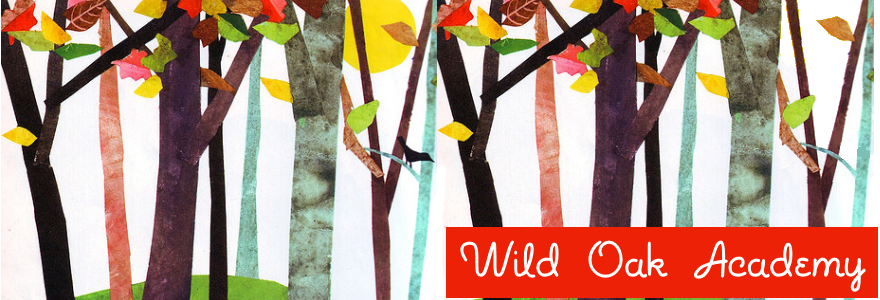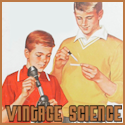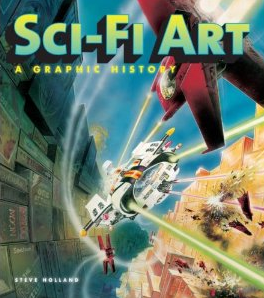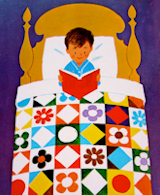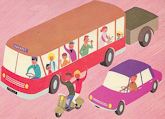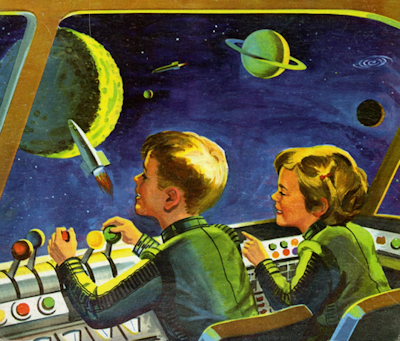
There is a wide range of options available when it comes to teaching science fiction. One of the first things I read when deciding to put together a science fiction literature study was the article, Why Teach Science Fiction? by Professor James Gunn. In it, he writes:
The kinds of subjects that can be taught through science fiction involve all the social and physical sciences, history, ideas, futurology, religion, morality, ecology, reading skills, and many others. In fact, looking at the course descriptions gathered for this issue of Science-Fiction Studies, I am impressed by the fact that they are addressed to almost every issue but the genre itself.
When teaching science fiction from a literary perspective, he outlines three approaches, any or all of which would be valid:
- The "great books" approach, in which the focus is on novels and critical analaysis of what makes them great.
- The "ideas in science fiction" approach, dealing with how science fiction stories can be used to dramatize contemporary problems.
- The historical approach - what is science fiction and how did it get to be that way?

Before I get back to planning our literature study, here were a couple of other ideas that captured my interest:
Teaching Science with Science Fiction
Bibliography:
- Teaching Science Fact with Science Fiction by Richard Raham
- The Science of Star Wars: An Astrophysicist's Independent Examination of Space Travel, Aliens, Planets, and Robots as Portrayed in the Star Wars Films by Jeanne Cavelos
- The Physics of Star Trek by Lawrence M. Krauss
- Planning a Middle School Science Fiction Unit: Contains an excellent book list for evolution and genetics-based science fiction.
Bibliography*:
*The first three books are specifically for middle grade students, while the last two are for adults, but still of value.
- Create-A-Future: Writing a Science Fiction Story by Eleanor Hoomes
- Adventures in Fantasy: Lessons and Activities in Narrative and Descriptive Writing, Grades 5-9 by John Gust
- Writing Magic: Creating Stories that Fly by Gail Carson Levine
- The Guide to Writing Fantasy and Science Fiction by Philip Athans
- World Building: A Writer's Guide to Constructing Star Systems and Life Supporting Planets by Stephen Gillet (Educational even for non-writers!)
- Teaching Science Fiction Writing from Teachers Network
Miscellaneous Resources
- Science Fiction and the Future: A Middle School unit from the Yale-New Haven Teachers Institute
- Sample High School Science Fiction Course from AboutSF
- AboutSF Lesson Library: Sadly, many of the links are currently broken, but hopefully they'll be fixed soon.
- Science Fiction Websites and Other Resources from the University of Kansas Center for Science Fiction Studies
- Science Fiction Reading List for Kids from the Golden Duck Awards (promoting excellence in children's science fiction)

As a spin-off to our year-long science fiction literature unit, we'll also be taking a look at retro-futurism, just for fun. This would also make a quirky tie-in to a study of technology or the history of inventions. Here's my reading list, though there may be some overlap between titles:
- The Wonderful Future that Never Was: Flying Cars, Mail Delivery by Parachutes and Other Predictions by the Editors of Popular Mechanics
- Where's My Jetpack?: A Guide to the Amazing Science Fiction Future that Never Arrived by Daniel H. Wilson
- How to Survive a Robot Uprising: Tips on Defending Yourself Against the Coming Rebellion by Daniel H. Wilson (This pertains to more to the history and future of robotics)
- Your Flying Car Awaits: Robot Butlers, Lunar Vacations, and Other Dead-Wrong Predictions of the Twentieth Century by Paul Milo
- A Brief History of Tomorrow by Jonathan Margolis
- DVDs: Walt Disney Treasures: Tomorrow Land: Disney in Space and Beyond (1959) and The Jetsons: The Complete First Season (1962)
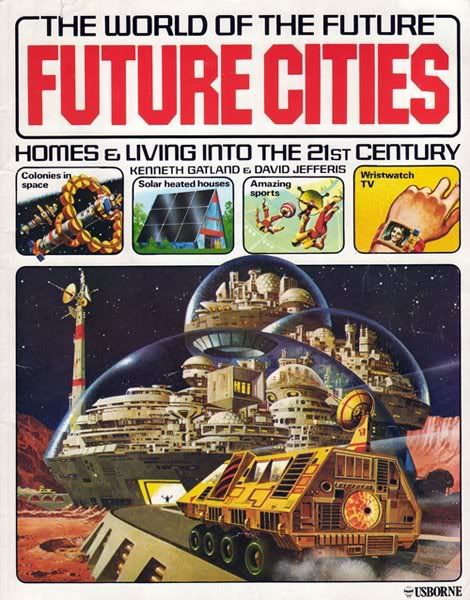
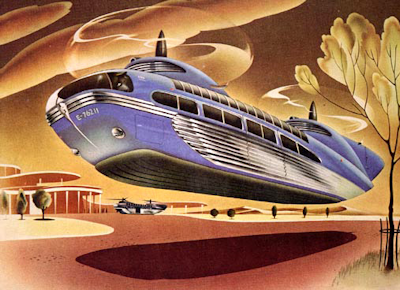
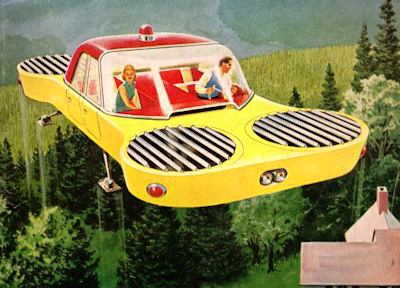
Labels: Science, Science Fiction
One of my recent ideas for school next year was to put together a science fiction unit for J, something that he would absolutely love (he wants to be an astrobiologist). Below are the books that I initially purchased, though I expect that some will be culled and others added as I get further into my pre-reading and planning. In particular, I like the idea of studying the books by sub-genre (time travel, dystopian, apocalyptic/post-apocalyptic, etc.), so there's clearly some organizational work to be done. More than likely our "spine" will be the amazing Prentice Hall Anthology of Science Fiction and Fantasy, a college text which I'll use selectively.
- Amazing Journeys: Journey to the Center of the Earth, From the Earth to the Moon, Circling the Moon, 20,000 Leagues Under the Seas, and Around the World in 80 Days (1864-1873) by Jules Verne
- The Time Machine (1895) by H.G. Wells
- Space Cadet (1948) by Robert Heinlein
- Red Planet (1949) by Robert Heinlein
- I, Robot (1950) by Isaac Asimov
- The Wonderful Flight to the Mushroom Planet (1954) by Eleanor Cameron (This is ideal for younger kids, but I didn't realize that until after I had purchased it!)
- The Stories of Ray Bradbury (Everyman's Library)
- Tunnel in the Sky (1955) by Robert Heinlein
- House of Stairs (1974) by William Sleator
- Interstellar Pig (1984) by William Sleator
- Ender’s Game (1985) by Orson Scott Card
- Spacer and Rat (2004) by Margaret Bechard
The Tom Corbett - Space Cadet series was inspired by Robert Heinlein's Space Cadet and published between 1952-1956. The series inspired comic books, a daily and Sunday newspaper strip, radio shows, and a television series.
Thanks to Boom Pop!, I discovered that 7 of the 8 titles are available as free eBooks at ManyBooks:
Thanks to Boom Pop!, I discovered that 7 of the 8 titles are available as free eBooks at ManyBooks:
While these books might not have much literary value, I thought they might be fun to include anyway (or maybe not!).

Dystopian Fiction*
*I picked these books from the excellent lists found here and here.
- The Giver by Lois Lowry
- Gathering Blue by Lois Lowry
- Messenger by Lois Lowry
- The Silenced by Jame DeVita
- Gone by Michael Grant
- Into the Forest by Jean Hegland
- Feed by M.T. Anderson
Labels: Literature, Science Fiction
Since I haven't done a weekly report in forever, I decided that I should force myself to write something this week. Overall, I'm feeling unusually dissatisfied, and have been since winter break. In particular, language arts (which I've written more about below) and history are distressing me - and distracting me from most everything else. I think I'm only upset about history because I'm working on a plan for next year which is utterly unique and rather brilliant and I'm impatient to get started on it! It's really hard to focus on this year when it seems positively dull in comparison!
Religion
- We've been shamefully lax about religion this past month, though the kids are still attending religious classes twice weekly at church. I hope to piece together a plan this weekend to get us back on track!

History
- The kids read A Colonial Town: Williamsburg by Bobbie Kalman.
- From Time Travelers: Colonial Life we read Lesson 14 about colonial village and city life and Lesson 21 about colonial crime and punishment.
- From Time Travelers: Colonial Life the kids completed a number of projects (including several from last week that never got finished). While I really love Time Travelers, the projects do take an awful lot of time. This forces us to spend week-upon-week studying the same period in history, which I think we're all sick of at this point.
- The kids read two chapters from Eating the Plates: A Pilgrim Book of Food and Manners by Lucille Recht Penner.
- Maddie finished reading The Witch of Blackbird Pond by Elizabeth George Speare while Jaymon finished reading The Witchcraft of Salem Village by Shirley Jackson. On Friday we discussed the books.
- We watched the following DVDs: In Search of History: Salem Witch Trials and Three Sovereigns for Sarah.
- The kids read and narrated a chapter per day from Isaac Newton and Physics for Kids: His Life and Ideas with 21 Activities. As usual, there wasn't enough time to actually complete any of the activities (nor was there, quite frankly, much interest). J has been doing his own science reading as well lately, studying the topics that interest him.
- The kids continued with daily lessons from their Singapore Math books. They're currently working on fractions and all is going blessedly well.
Since December, I've been feeling enormously discontented with several aspects of our entire language arts program. With D at public school again this year, and headed to an academically rigorous private high school next year, I've become increasingly aware of his weaknesses in language arts. There are deficiencies that I wish I had seen sooner, so that we could have worked on them during the brief time he was at home. This has made me especially mindful of M and J's education, since they remain home with me. What an enormous responsibility a child's education is! Silly as it may sound, I think the full weight of that has only just hit me.
In analyzing the potential "gaps" in their education, I found it helpful to first compile a list of goals. To do this, I consulted the state's curriculum content standards and the result was, quite frankly, overwhelming (here, for example, are the reading goals). Then, I decided to take a step back and listen to Susan Wise Bauer's excellent audio lectures (specifically those on writing and literary analysis). They're really such a joy to listen to, and very comforting, but at the same time, too simplistic I think.
So, I've been puzzling over all of this for awhile now and, while I still don't have a clear plan in place, I am getting closer. Nevertheless, I expect there will continue to be a slight amount of chaos until everything gets sorted out. With that in mind, here's what we did this week:
- Daily cursive copywork from the Bible and George Washington's Rules of Civility and Decent Behaviour In Company and Conversation, part of the Time Travelers: Colonial Life unit.
- In Voyages in English, the kids completed five lessons pertaining to limiting adjectives, demonstrative adjectives, possessive adjectives and the position of adjectives. Overall, I'm quite pleased with Voyages in English, but realized this week that while the books cover a lot of ground, there isn't nearly enough review (and thus, retention suffers). Beginning next week, I plan to resume daily or thrice-weekly review drills. We did this with Rod and Staff English and I found it fairly effective.
- For spelling we completed four lessons plus a review lesson from Dictation Day-by-Day by Kate Van Wagenen. Misspelled words were written ten times each. Though we haven't been using the book for long, I really like it.
- From Figuratively Speaking, the kids learned about denotation and connotation, with an emphasis on the shades of meaning a word can have. I stretched the lesson to last all week and supplemented with a few additional worksheets found online (here, here and here).
- We took a week off from writing/composition work this week while I assess where we're at and where we need to be. Moving forward, I know that I will continue to use Methods and Material for Composition in Intermediate and Grammar Grades by Alhambra Deming. I'm also expecting Grammar for Middle School: A Sentence-Composing Approach by Don Killgallon to arrive today, and have a few other ideas that I'm working on.
I feel as though I've been going in about a hundred different directions at once these days! I recently learned that the company I work for may be closing soon and am feeling quite conflicted about that. Since high school, I've never not worked, but at the same time, after working from home for seven years, I think I would find returning to a 9 to 5 office job very difficult! So, it's not likely that I will get another job if/when my present job ends. That would, of course, free up so much more time for me, which would be wonderful. At the same time, my income pays for all of our books and fun stuff. Needless to say, I've been spending every penny on books these days - in a panic for the future!
At present I'm trying to sort out all of our lesson issues (see above), pre-read M and J's books for next year to forumulate ideas (honestly, I think I've got at least two years of books so far!), read books on teaching reading and writing, and, in the time that's left, read for pleasure...Needless to say, I fall asleep every night with a book in hand and am, overall, utterly exhausted. I just finished Kate Morton's The Forgotten Garden, which is quite simply the best novel I've read in a long time - I loved everything about it.
Labels: Weekly Report
For the most part, I've simply copy and pasted the Kansas curriculum content standards for 7th grade here, and added the resources that I've found to assist in teaching them. Thus far, this is a largely a collection of graphic organizers, but I hope to add more varied resources in the future.
Vocabulary
Goal: The student expands their vocabulary.
- Determines meaning of words or phrases using context clues (e.g., definitions, restatements, examples, descriptions, comparison-contrast, clue words) from sentences or paragraphs.
- Use cloze reading strategies.
- Determines meaning of words through structural analysis, using knowledge of Greek, Latin, and Anglo-Saxon roots, prefixes, and suffixes to understand complex words, including words in science, mathematics, and social studies.
- Word Roots Software from The Critical Thinking Company (also available in workbook form).
- Vocabulary from Classical Roots: Greek and Latin word root study (workbook format), available in five levels.
- Words on the Vine: 36 Vocabulary Units on Root Words: Workbook for grades 5-8.
- Rummy Roots and More Roots: 4-in-1 card game set to learn Greek and Latin roots.
- Identifies and determines the meaning of figurative language (similes, metaphors, analogies, hyperbole, onomatopoeia, personification, and idioms).
- Figuratively Speaking: Using Classic Literature to Teach 40 Literary Terms: Workbook for grades 5-8.
- An Introduction to Poetry by X.J. Kennedy and Dana Gioia
- Teaching Literary Elements with Picture Books: Fifteen lessons for using picture books to teach literary elements such as point of view, voice, irony, theme, metaphor, simile, and more.
- Using Picture Storybooks to Teach Literary Devices: Recommended Books for Children and Young Adults: A reference book containing over 120 picture books useful for teaching 41 literary devices.
- Figurative Language: Part of a 36-page packet of graphic organizers (.PDF).
- Identifies word connotations and word denotations.
The choice of words that a writer uses, and the tone of those words, is what evokes an emotion in us. As an active reader, you should question the author's use of words: Why does your author use neutral, positive, or negative connotative language? How does it affect the characters and you? - Figuratively Speaking: Using Classic Literature to Teach 40 Literary Terms: Workbook for grades 5-8; contains a lesson on connotation and denotation.
- Connotation and Denotation: An excellent 8-page handout with exercises (.PDF).
- Shades of Meaning: A lesson plan from Visual Thesaurus.
- Denotation and Connotation: A worksheet on identifying positive, neutral, and negative connotations (.PDF).
- Teaching Connotation and Denotation: Part I, Part II
Goal: The student reads and comprehends grade-level-appropriate material. They describe and connect the essential ideas, arguments, and perspectives of the text by using their knowledge of text structure, organization, and purpose. The student comprehends a variety of texts (narrative, expository, technical and persuasive).
- The student identifies characteristics of narrative, expository, technical, and persuasive texts.
- Narrative Text Structure: A 34-page packet of lessons and graphic organizers, aimed at grades 4-5 (.PDF).
- Five Expository Text Structures and Their Associated Signal Words: Handout (.PDF)
- Persuasive and Instructive (Technical) Texts: Handout (.PDF)
- Find a Purpose for Reading: How Does the Author Communicate?: Graphic organizer, part of a 36-page packet of graphic organizers (.PDF).
- The student understands the purpose of text features (e.g., title, graphs/charts and maps, table of contents, pictures/illustrations, boldface type, italics, glossary, index, headings, subheadings, topic and summary sentences, captions, sidebars, underlining, numbered or bulleted lists) and uses such features to locate information in and to gain meaning from appropriate-level texts.
- Teaching Students to Read Nonfiction by Alice Boynton and Wiley Blevins
- Gathering Information on a Topic Graphic organizer, part of a 36-page packet of graphic organizers (.PDF).
- The student uses prior knowledge, content, and text type features to make, to revise, and to confirm predictions.
- Reading Strategies Checklist for Students: Part of a 36-page packet of graphic organizers (.PDF).
- Prediction Chart: Part of a 36-page packet of graphic organizers for teachers (.PDF).
- The student generates and responds logically to literal, inferential, evaluative, synthesizing, and critical thinking questions before, during, and after reading the text.
- The student uses information from the text to make inferences and draw conclusions.
- Making Inferences Graphic Organizer from Scholastic (.PDF)
- Drawing Conclusions Graphic Organizer from Scholastic (.PDF)
- The student analyzes how text structure (e.g., sequence, problem-solution, comparison-contrast, description, cause-effect) helps support comprehension of text.
- The student compares and contrasts varying aspects (e.g., characters' traits and motives, themes, problem-solution, cause-effect relationships, ideas and concepts, procedures, viewpoints, authors' purposes) in one or more appropriate-level texts.
- Compare/Contrast Venn Diagram Graphic Organizer from Scholastic (.PDF)
- The student uses paraphrasing and organizational skills to summarize information (e.g., stated and implied main ideas, main events, important details) from appropriate-level narrative, expository,
technical, and persuasive texts in logical order. - How to Summarize and Paraphrase : A Handout from Freeology (.PDF).
- Summarizing Graphic Organizer from Scholastic (.PDF)
- Use Text Organization: Summarize Sections: Graphic organizer, part of a 36-page packet of graphic organizers (.PDF).
- The student identifies the topic, main idea(s), supporting details, and theme(s) in text across the content areas and from a variety of sources in appropriate-level texts.
- Main Idea and Supporting Details Graphic Organizer from Scholastic (.PDF)
- What's the Main Idea? Fishbone Graphic Organizer from Scholastic (.PDF) or Fish Bones Graphic Organizer from Freeology (.PDF): The students write the main idea of the story across the backbone of the fish and on lines stemming out from the fish, they write answers to the questions “Who is the author talking about?”, “What did they do?”, “When did they do it?”, “Where did they do it?”, “How did they do it?”, and “Why did they do it?”
- The student follows directions explained in a technical (instructive) text.
- The student identifies the author's position in a persuasive text and describes techniques the author uses to support that position (e.g., bandwagon approach, glittering generalities, testimonials, citing statistics, other techniques that appeal to reason or emotion).
- Identifying Voice: A persuasive text lesson plan (.PDF).
- Find a Purpose for Reading: Create a Pro and Con Chart (.PDF)
- The student distinguishes between fact and opinion, and recognizes propaganda (e.g., advertising, media, politics, warfare), bias, and stereotypes in various types of appropriate-level texts.
- Fact and Opinion Graphic Organizer from Education Place (.PDF)
Goal: The student uses literary concepts to interpret and respond to text.
- The student describes different aspects of major and minor characters (e.g., their physical traits, personality traits, feelings, actions, motives) and explains how those aspects influence characters' interactions with other characters and elements of the plot, including resolution of the major conflict
- Character Sheet and Traits Graphic Organizer from Scholastic (.PDF)
- Characterization Graphic Organizer (.PDF)
- Cluster Chart: To keep track of character traits or main ideas; part of a 36-page packet of graphic organizers (.PDF).
- Character Predictions: Graphic organizer; part of a 36-page packet of graphic organizers (.PDF).
- The student identifies and describes the setting (e.g., environment, time of day or year, historical period, situation, place) and analyzes connections between the setting and other story elements (e.g., character, plot).
- See: Deconstructing Penguin: Parents, Kids and the Bond of Reading by Lawrence and Nancy Goldstone and Fresh Takes on Literary Analysis: How to Teach What Really Matters About Character, Setting, Point of View, and Theme by Jeffrey Wilhelm
- The student identifies major and minor elements of the plot (e.g., problem or conflict, climax, resolution, rising action, falling action, subplots, parallel episodes) and explains how these elements relate to one another.
- Story Map (1) Graphic Organizer from Education Place (.PDF)
- Story Map (2) Graphic Organizer from Education Place (.PDF)
- Story Map (3) Graphic Organizer from Education Place (.PDF)
- Plot Map Graphic Organizer (.PDF)
- Story Plot Graph and Story Plot Terms Handout (.PDF)
- Visualize: Create a Story Strip: Graphic organizer; part of a 36-page packet of graphic organizers (.PDF).
- Predict Outcomes: Graphic organizer to predict the outcome of a piece; part of a 36-page packet of graphic organizers (.PDF).
- Use Text Organization: Making a Story Map: Graphic organizer, part of a 36-page packet of graphic organizers (.PDF).
- Use Text Organization: Fill in a Plot Diagram: Graphic organizer, part of a 36-page packet of graphic organizers (.PDF).
- The student recognizes aspects of theme (e.g., moral, lesson, meaning, message, author's ideas about the subject) and recurring themes across works (e.g., bravery, loneliness, loyalty, friendship).
- Find a Purpose for Reading: Keeping Track of the Author's Key Ideas: Graphic organizer, from a 36-page packet of graphic organizers (.PDF).
- The student identifies literary devices (e.g., foreshadowing, flashback, figurative language, irony, metaphor, tone/mood, symbolism).
- Reading Response Form: Includes a place to write the literary device(s) used and explain how the device is used (.PDF).
- Figuratively Speaking: Using Classic Literature to Teach 40 Literary Terms: Workbook for grades 5-8.
- The student contrasts point of view (e.g., first and third person, limited and omniscient, subjective and objective) in narrative text and explain how they affect the overall theme of the work.
- The student identifies common structures and stylistic elements in literature, folklore, and myths from a variety of cultures.
- The student compares and contrasts customs and ideas within literature
representing a variety of cultures. - The student recognizes connections between cultures and experiences through a variety of texts.
Labels: Language Arts
Subscribe to:
Posts (Atom)
